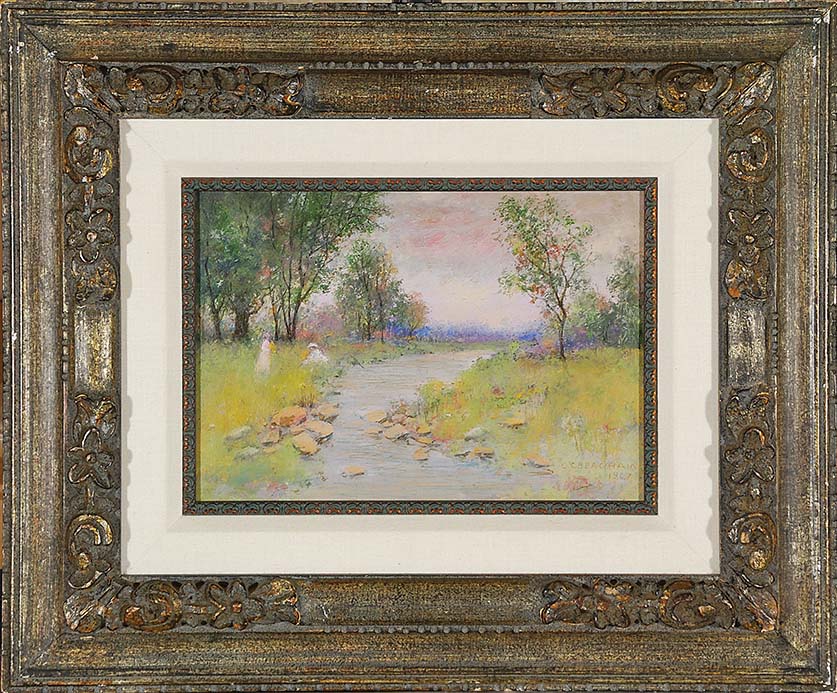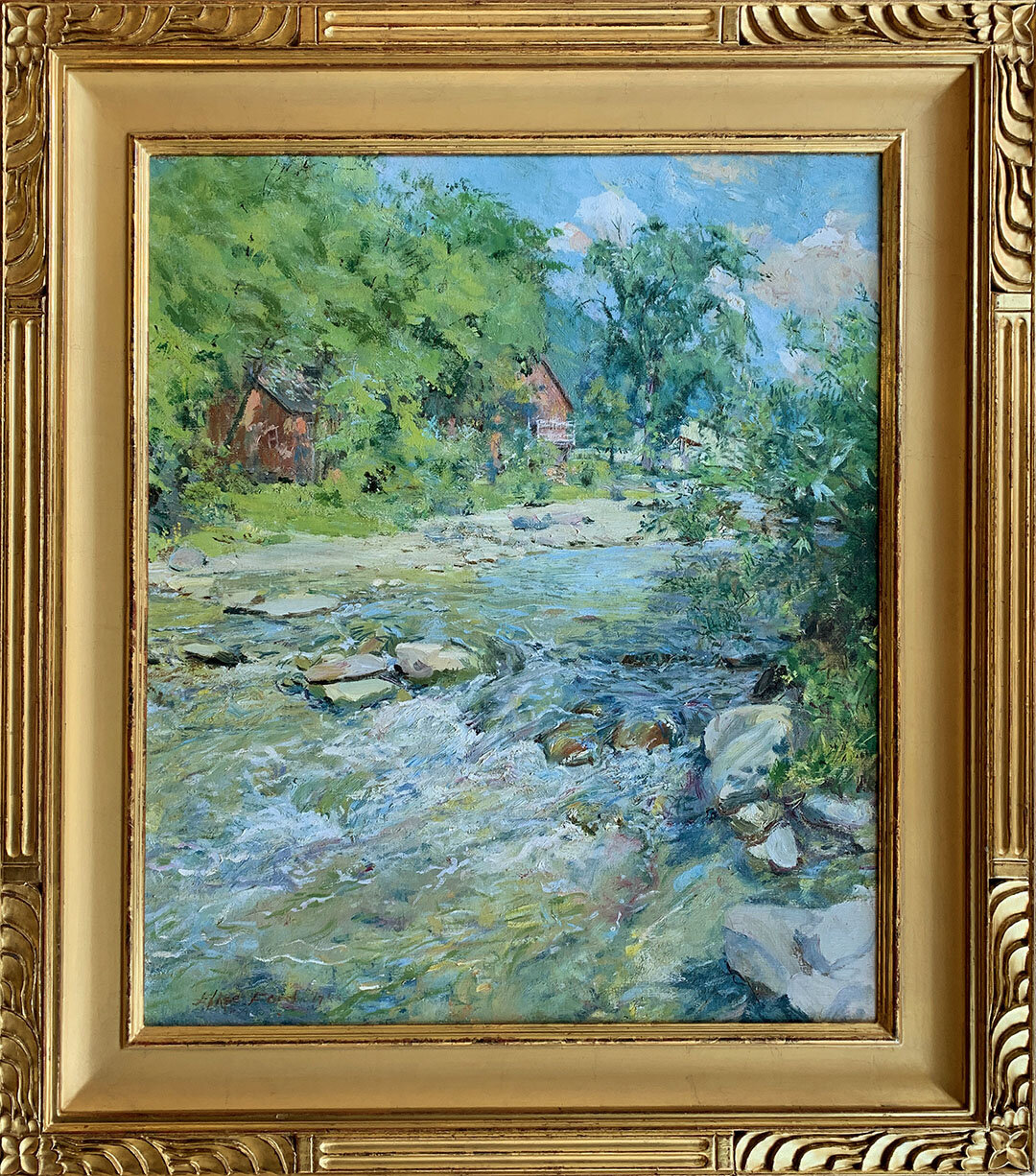Robert S. Duncanson
Robert S. Duncanson
Lago Maggiore, Italy 1863 - Listed as "Picnickers By a Lake" #95 in Joseph Kettner's catalogue raisonne on Duncanson
Oil on Canvas
16 x 22 inches
Initialed Lower Left
Inventory ID: RS509
This painting is signed and titled on the reverse - "Lago Maggiore painted by R.S. Duncanson 1863"
Lago Maggiore is located on the southern edge of the Alps near the city of Lugano. This lake is the second largest lake in Italy.
_______________
Although Hudson River style landscape painting is most associated with Robert Duncanson, his floral still lifes first brought him recognition. He is also thought to be the first black painter and muralist in America to earn his living by painting and to become internationally known.
Born in New York State to a Scottish Canadian father and mulatto mother, he likely had a birth year between 1817 and 1822, but that remains uncertain. Because of racial prejudice, his father took him to Canada to be educated in a more tolerant atmosphere. As an artist, he was largely self-taught and studied reproductions of the Hudson River School painters. In 1841, he joined his mother in Cincinnati, Ohio, and shortly after began exhibiting there.
Nicholas Longworth, a prominent citizen, supported his work and commissioned him to paint murals in his residence, now the Taft Museum. These eight murals were large-scale landscapes with elaborate frames and were covered with wall paper by subsequent owners. However, the daughter of these owners and her husband, Anna Sinton and Charles Taft, gave them to the city of Cincinnati, and Cincinnati Art Museum Director, Walter Siple had them restored.
Duncanson traveled widely from Cincinnati, doing numerous landscapes and also some daguerreotypes. In 1853, he went to Europe and then returned to paint classical motifs into his landscapes, obviously influenced by his exposure in Europe to Neo-Classicism. During the Civil War, he was in England and Scotland.
In 1872 he suffered a mental breakdown and died shortly after in Detroit, Michigan.





